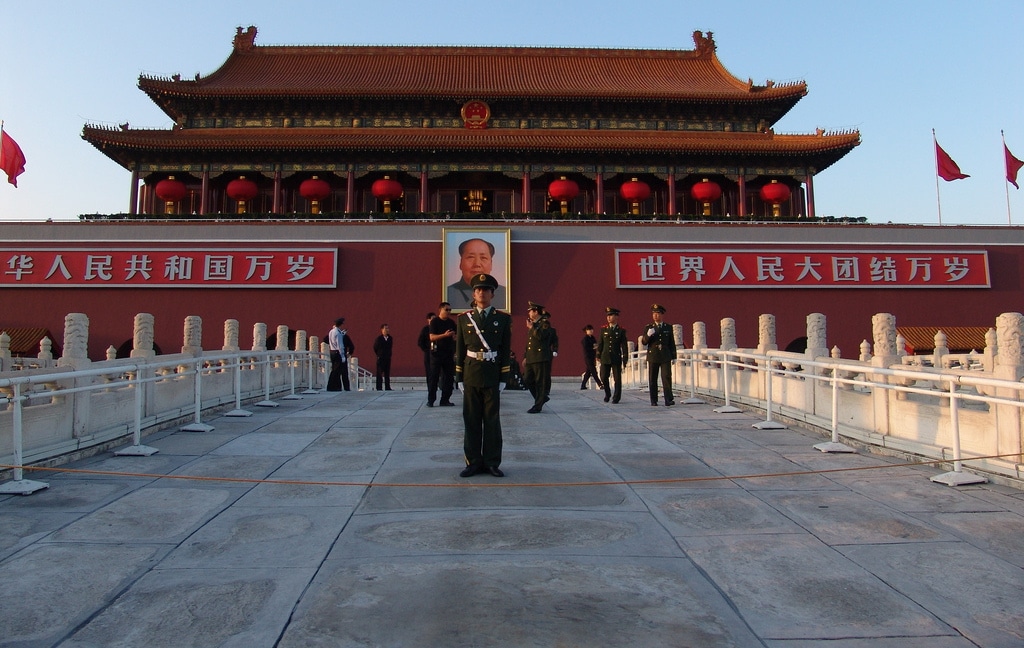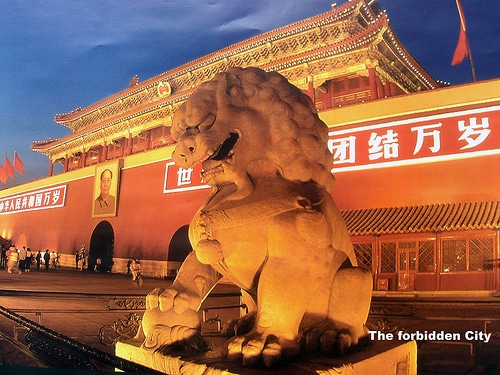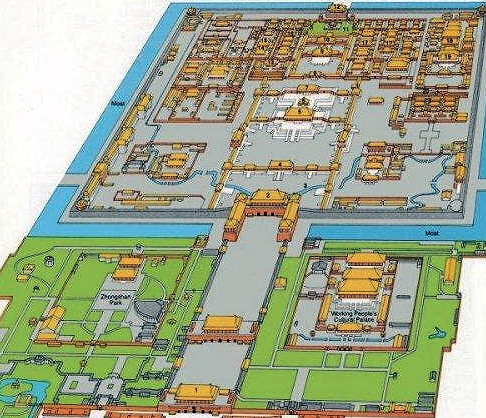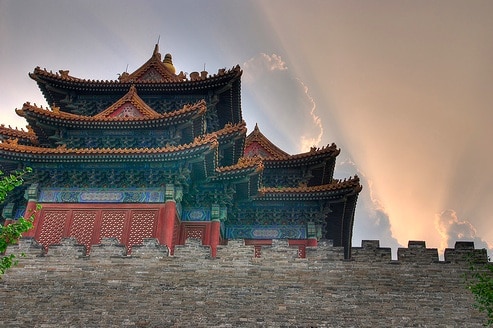Beijing’s most famous tourist attraction is the Forbidden City—where China’s emperors held court for 500 years from the 15th century until 1911. Since the Chinese believed that the emperor was the Son of Heaven, they believed that the Forbidden City was literally at the center of the Universe (and you thought Donald Trump had a big ego).
A UNESCO World Heritage Site since 1987, the Forbidden City was constructed to awe visitors and banish any doubt that this was indeed the home of the Son of Heaven. Not that there were many people to intimidate since ordinary Chinese were forbidden from even approaching the walls of the palace (hence the Forbidden Palace’s name, although today the Chinese call it Gùgōng (故宫), meaning “former palace”).
And while the immense complex—really a city within a city— sees thousands of foreign and domestic tourists daily, it’s so massive that you can easily find a secluded pavilion to recharge your batteries in peace.
Guarded by a 170-foot wide moat and 30-foot high walls, the 183-acre site is a vast complex of buildings, halls, pavilions, and marble courtyards. The complex consists of almost 1,000 buildings and over 8,000 chambers, which housed an estimated 8,000-10,000 maids and other servants. Believe it or not, many servants (and even some emperors) lived their ENTIRE lives within the walls of the Forbidden City! And you thought your boss was stingy about vacation days.
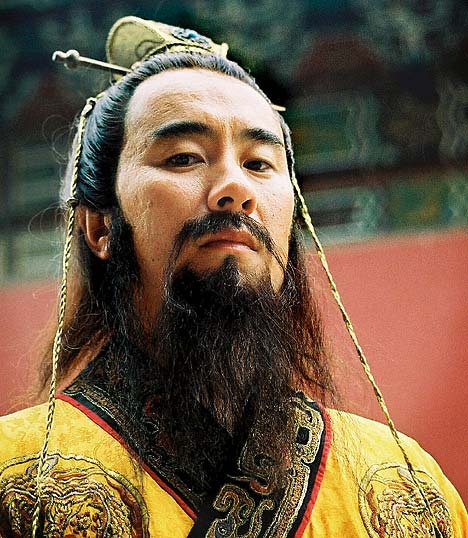
In addition to having a platoon of different wives, China’s emperors also had literally thousands of concubines available to serve them. Some would pick out a name from a silver tray and the lucky concubine would be delivered to his chambers (in your face, Hugh Hefner!). To ensure that the emperor was the only dude doing the impregnating, the only other males allowed inside his inner sanctum were his army of eunuch-servants (amazingly, it was considered a great honor to become a castrated member—pun intended—of the emperor’s court). Eunuchs would deliver concubines to the emperor’s bedchamber on their backs (since they could barely walk with bound feet). I’d imagine Tiger Woods would not have been eagerly invited to an overnight slumber party.
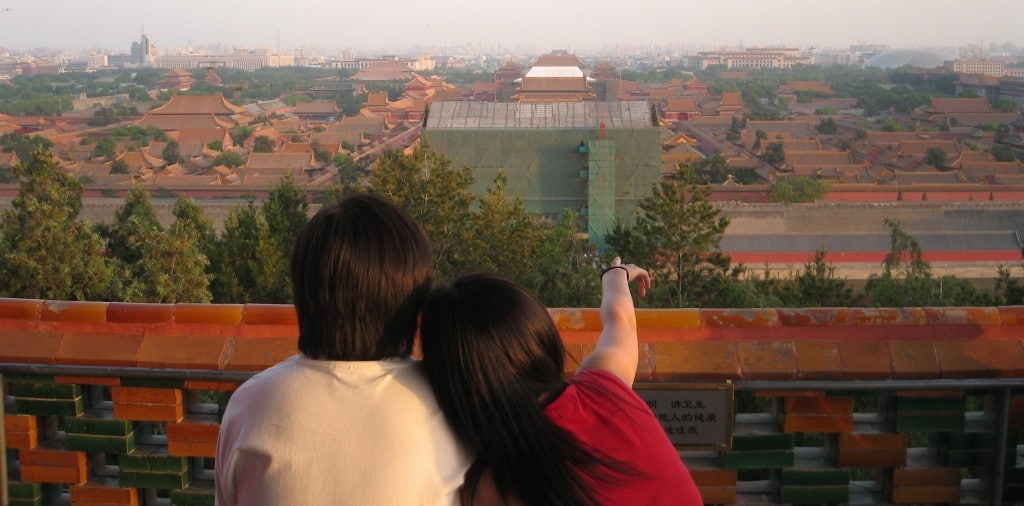
More Info & History
After deciding to move the imperial capital back to Beijing (from Nanjing in the south), the legendary Ming emperor Zhu Di ordered the construction of the Forbidden City in 1406. The scale of construction was epic, taking more than a million workers over 15 years to finish. As with the building of the Great Wall of China, hundreds of thousands were forcibly uprooted from towns and villages around the country and sent to Beijing.
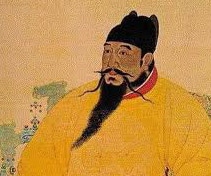
To feed and accommodate the influx of people in the new capital, the emperor ordered the Grand Canal—first constructed in the late 5th century—to be extended all the way north to Beijing. In other words, around the time that Europe descended into the Dark Ages, China was building a canal that would link Beijing to Hangzhou, some 1,000 miles to the south. And yet today, for some reason they can’t manufacture a radio that lasts more than a week.
The Forbidden City, like the rest of Beijing, was constructed in a grid pattern accordance to feng shui principles. The most important structures were built on a north-south axis—facing south to provide protection from negative yin influences such as cold winds, wandering ghosts, and barbarian invaders.
Speaking of barbarian invaders, some years back a Starbucks controversy started brewing over a small store inside the Forbidden City. A Chinese journalist started a grass-roots campaign to close down the location—demonizing it as a symbol of the insidious way Western influences are corrupting Chinese culture. Soon the Chinese media caught wind and Starbucks eventually closed down the store in 2007. (On an unrelated note, I’m starting a boycott of the Panda Express in the food court of the US Capitol. But mostly because it taste like crap).
Many of the 24 emperors who lived in the Forbidden City rarely ventured beyond its walls, except for the occasional trip to the Temple of Heaven, the Summer Palace, or Mountain Resort for some R&R. After seeing the sheer size of the place, it’s easy to see how they became disconnected from the real China. Living in their safe, little (okay, big) bubble, the last Chinese emperors were blind to the country’s problems until Western powers were literally blasting their way into China’s ports.
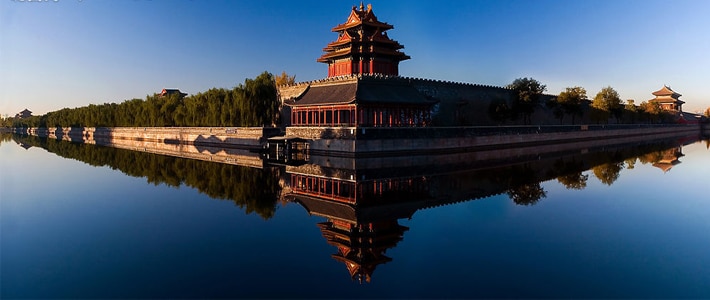
One famous symbol of this myopic mismanagement is the “Marble Boat,” which is still on display at a lakeside pavilion in the Summer Palace. At a time when China should’ve been scrambling to defend itself against the Western powers, the powerful but clueless Empress Dowager Ci Xi ordered an expensive restoration of the Marble Boat in 1893, by diverting funds that were earmarked for building a royal Navy (doh!). Naturally, no one dared to disagree with her brilliant plan for fear of having their head lopped off. Oh, and this was the same empress who would commonly order over 100 dishes for a single meal that reportedly could’ve fed thousands of starving peasants outside the palace walls.
Today, the Forbidden City’s imposing main gateway looks over Tiananmen Square— where Chairman Mao’s painting was famously pelted with eggs during the student uprising. And although fires and looting over the years have left the Forbidden City as a shadow of its former glory days, it’s still a pretty damn impressive shadow and a must-see tourist attraction.
